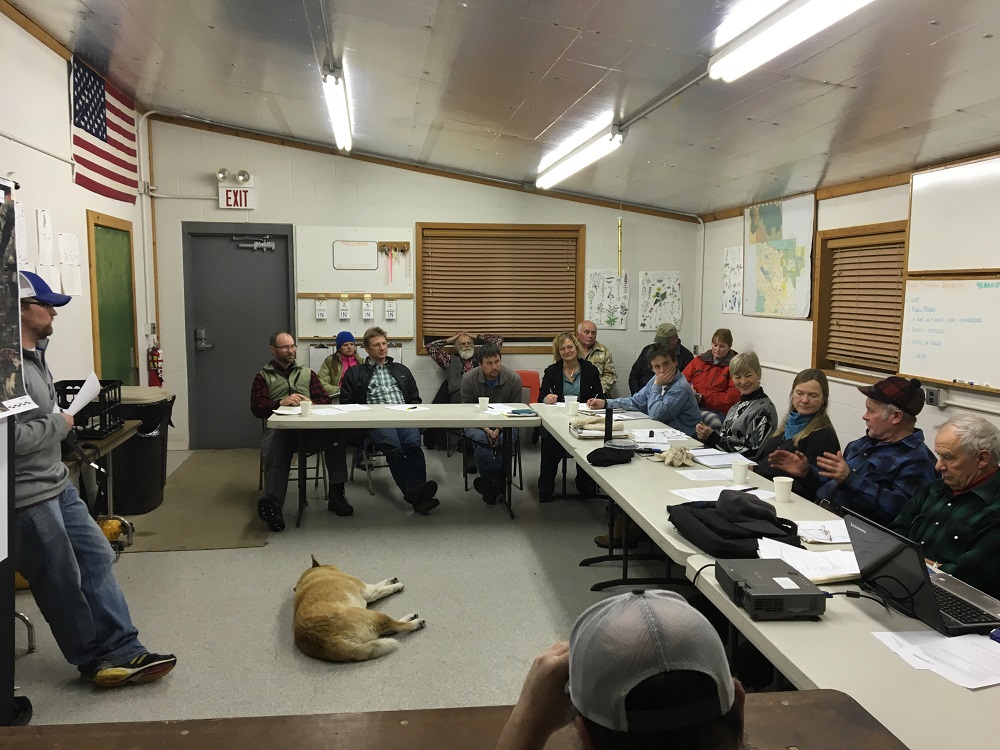GOVERNANCE & MANAGEMENT
Decision-making on the Blackfoot Community Conservation Area
To represent the diversity of community values and opinions, the BCCA Council is comprised of two categories:
CATEGORY #1 — AGENCIES
Four representatives from agencies that own or manage land adjacent to the Core, including Lolo National Forest, US Fish and Wildlife Service, Montana Department of Natural Resources and Conservation, and Montana Fish, Wildlife and Parks.
CATEGORY #2 — STAKEHOLDERS
Eleven individuals representing both newer landowners and multi-generation ranch families, recreationists, local businesses, commercial outfitters, schools, and/or local clubs and organizations.
Council positions are filled annually as terms expire. The BCCA Council and Blackfoot Challenge solicit nominations from the community to represent Category 2 (stakeholders) as positions become available. Members serve three year terms, beginning January 1st of each calendar year. Agency representatives serve consecutive terms. Stakeholders are also eligible to serve consecutive terms, and may reapply immediately after the completion of each three year term. There is no limit to the number of terms a Stakeholder may serve on the Council. Selection is based primarily on three criteria:
- the individual’s ability to be an active participant for their term of appointment,
- the individual’s willingness to work positively and cooperatively to reach management decisions that best meet the goals of the BCCA, and
- diversity of representation.
The Council endeavors to reach management decisions through consensus. To assist in realizing this goal, the Council uses the “thumbs rule” when a vote is required. Council members in favor of the decision or proposal will give a thumbs up; those who may not be in favor the decision or proposal but can accept it in spirit of compromise will give a thumbs sideways to indicate their position; and finally those who cannot accept the decision or proposal as presented will give a thumbs down. If a Council member gives a thumbs down, he/she will be encouraged to present an alternate proposal to meet the needs of all Council members.
The charge of the BCCA Council is to develop and implement cooperative management of the BCCA:
- Develop and implement the Management Plan for the Core.
- Develop an annual budget and workplan for the Core.
- Fundraise for the annual budget and special projects.
- Consider community proposals for uses or projects on the BCCA Core.
- Form and maintain an updated MOU to coordinate management of the 41,000-acre BCCA.
The Board of Directors of the Blackfoot Challenge retains authority to:
- Approve the Management Plan for the Core.
- Approve the annual budget and workplan for the Core.
- Approve membership, new appointments or dissolution of the BCCA Council.
- Establish an endowment fund and operating procedures to support long-term stewardship of the BCCA and appropriate areas throughout the watershed.
- Endorse the MOU and policy plan for the 41,000-acre BCCA.
- Provide liability coverage, administrative and general support for the BCCA Council.

Management
The Blackfoot Challenge Board of Directors provides staff support to assist the Council as deemed necessary by the Board and Council. Three workgroups have been formed, including 1) Forestry; 2) Grazing/Noxious Weeds; and 3) Recreation/Education/Wildlife, to complete work on given tasks and develop recommendations for full Council consideration and decisions. A part-time Land Steward coordinates and implements on-the-ground projects specified by the workgroups in the annual workplan. A Management Workgroup, comprised of the Chair, Vice-Chair, and one agency member, provides day-to-day oversight of the Land Steward and annual workplan activities. Click here to read the full Management Plan for the Core.
Community Vision for the BCCA Core:
Develop a working landscape that balances ecological diversity with local economic sustainability for the future benefit of the Blackfoot watershed community. Management will entail activities that seek to conserve, enhance and maintain a balance of wildlife habitat, wetlands, water, grasslands and timber resources with traditional uses including hunting, recreation, agriculture, and forestry. These shared values for the land will be complimented through working cooperatively with surrounding agencies and private landowners.
Current Activities
- Forest restoration and fuel reduction to increase forest health, reduce wildfire risk and improve wildlife habitat.
- Ongoing noxious weed treatments along right-of-ways and in parks using a mix of chemical treatments and biocontrols (bugs).
- Motorized use with permit in allowed areas during 6 weeks in summer; snowmobile use in allowed areas during the winter.
- Livestock grazing in four leased pastures throughout the spring, summer and fall.
- In cooperation with MT Fish, Wildlife & Parks, public hunting access on the Ovando Mountain Block Management Area.
- Stream and forest monitoring with local elementary schools.
- Firewood and Christmas tree harvest permitting.
- Park closures during elk calving.
- Ongoing road maintenance.
Interested in learning more about what you can do on the BCCA? See our “Visit the BCCA” page.
Interested in attending a BCCA Council meeting? The Council meets every other month and all meetings are open to the public. Check out our Event Calendar to find out when the next meeting is taking place.
